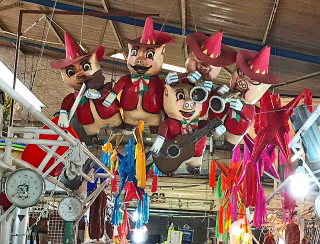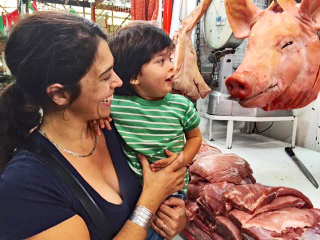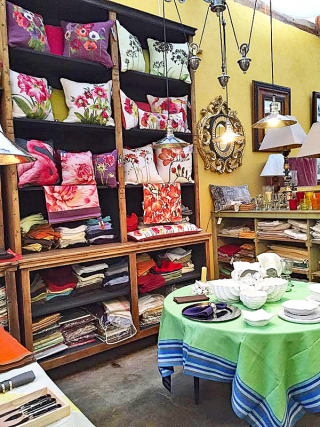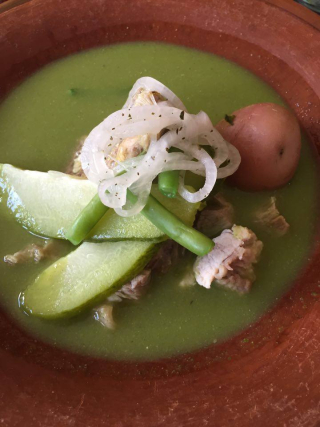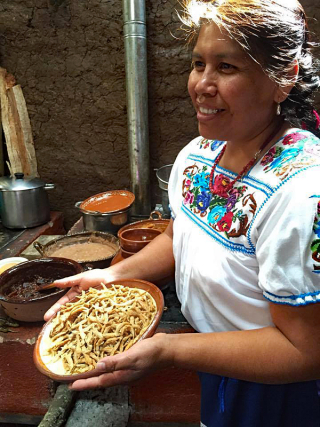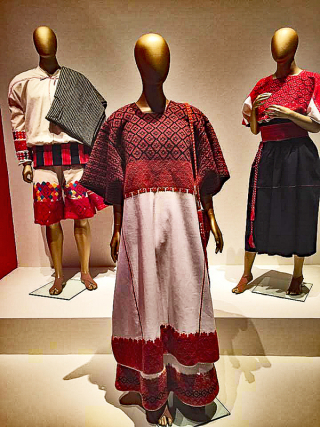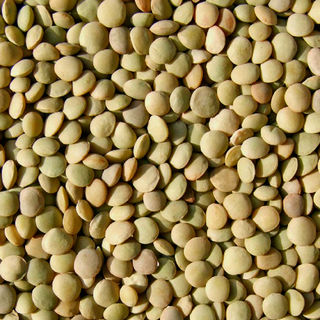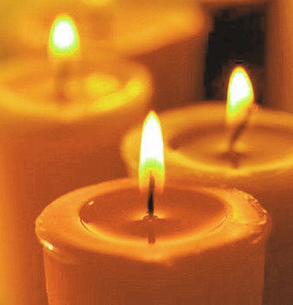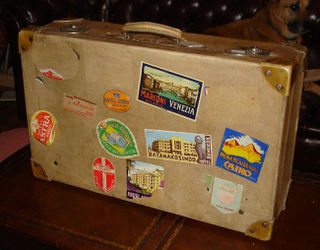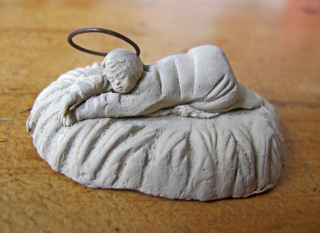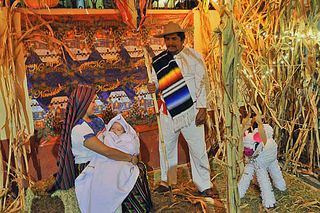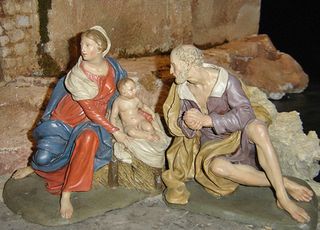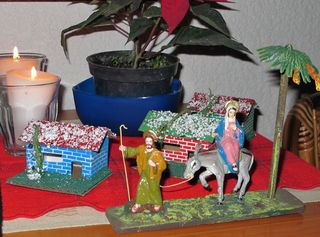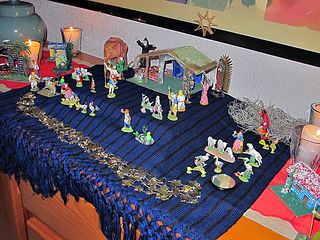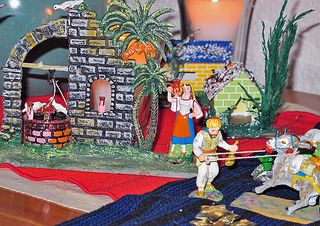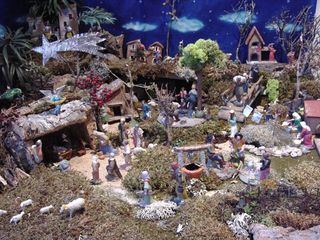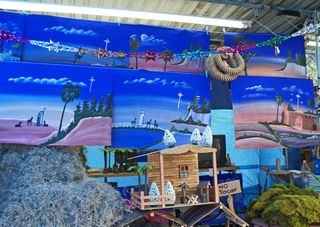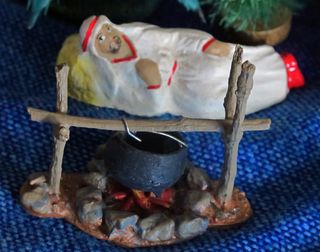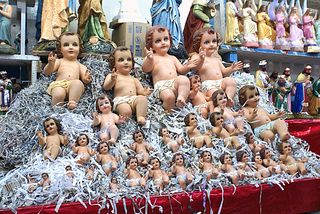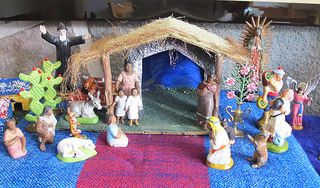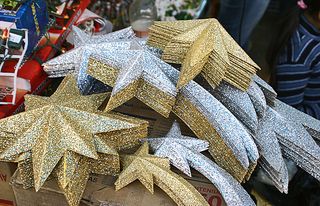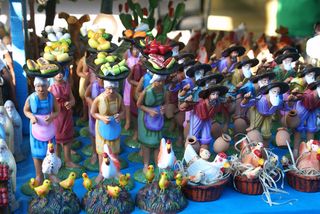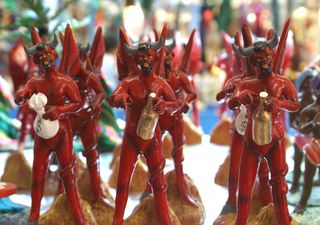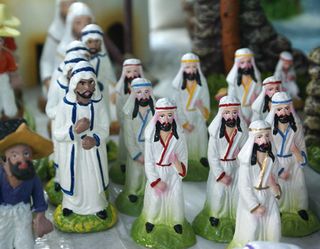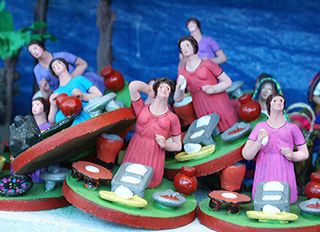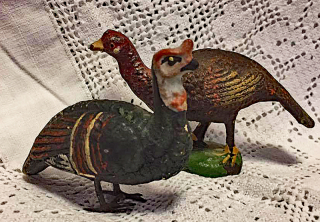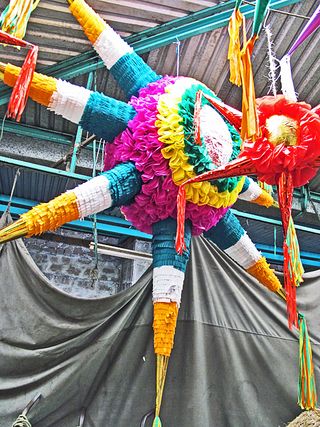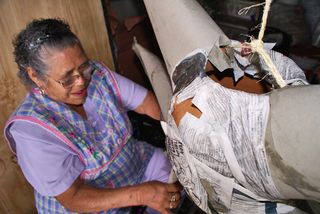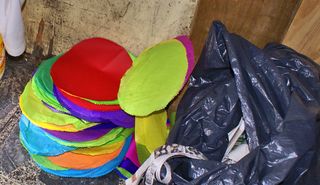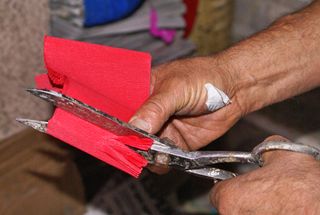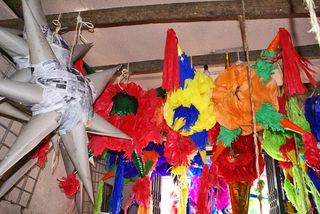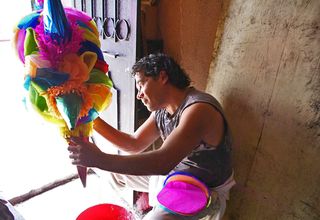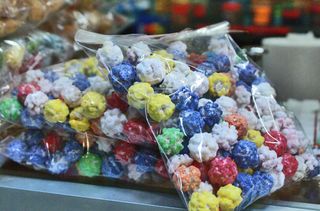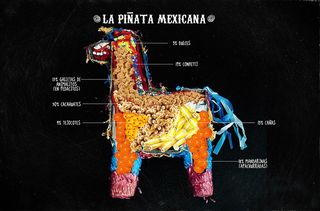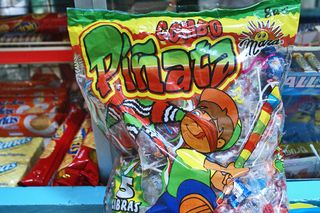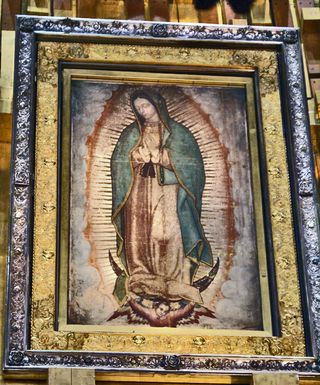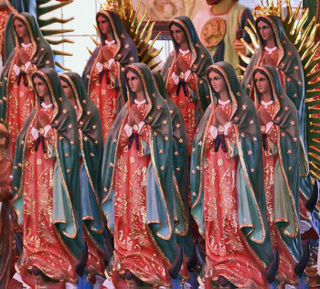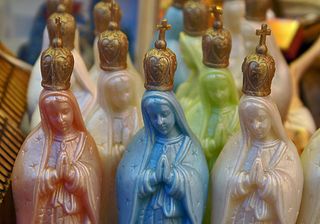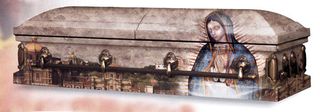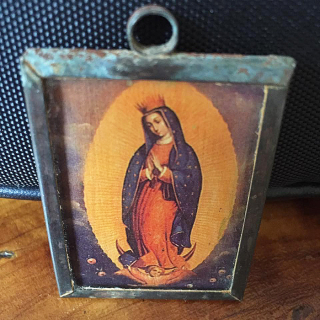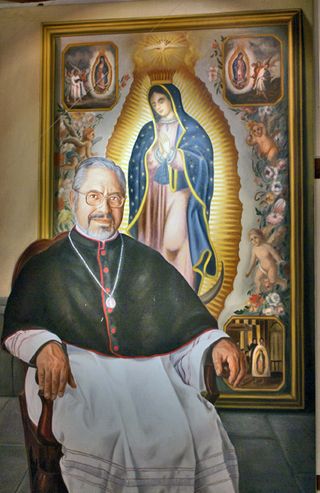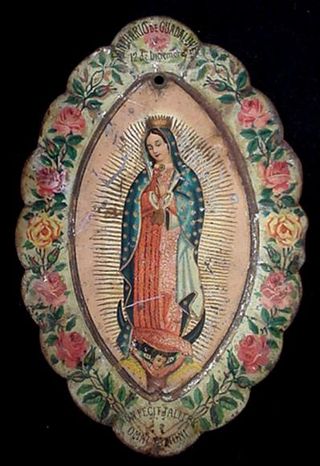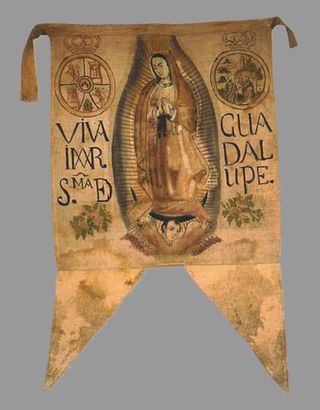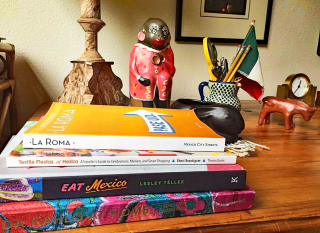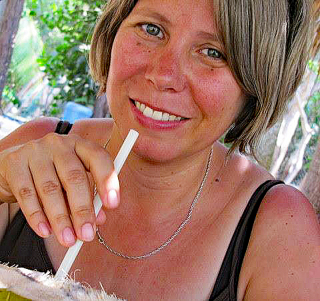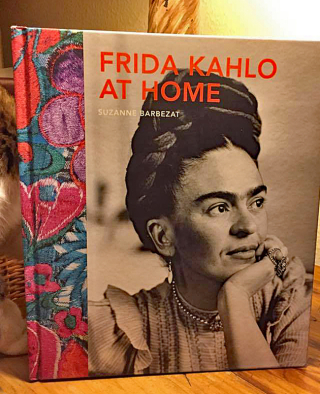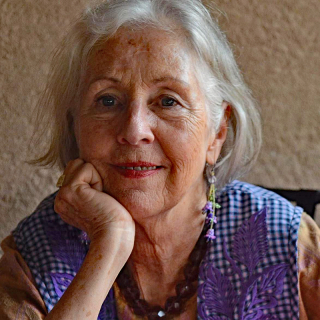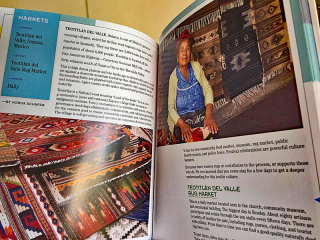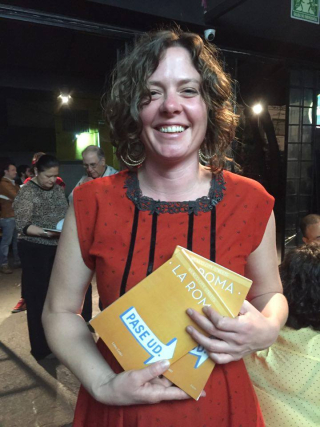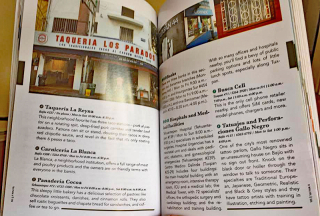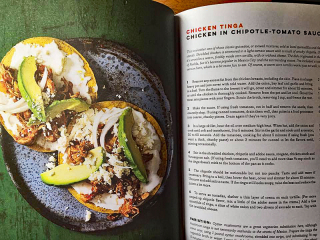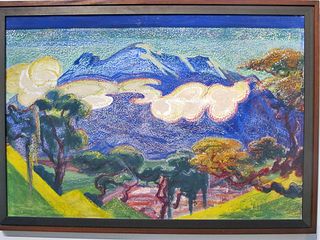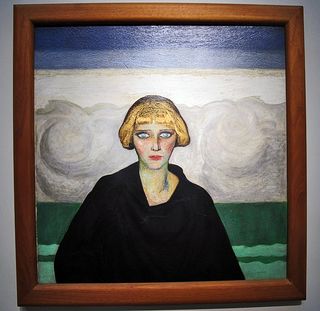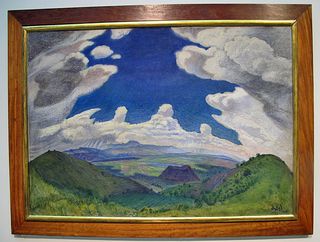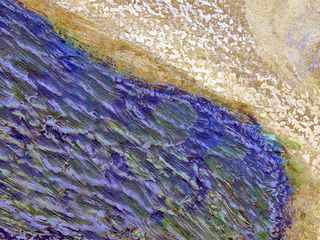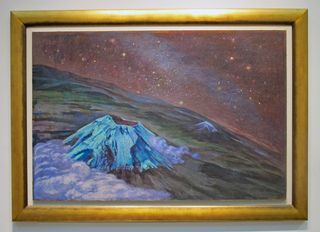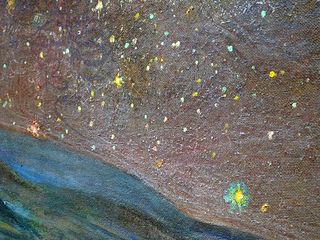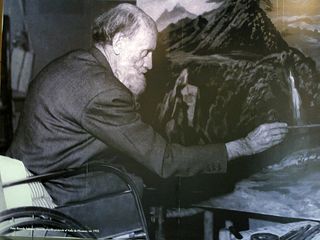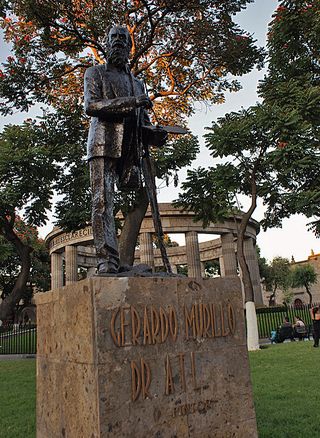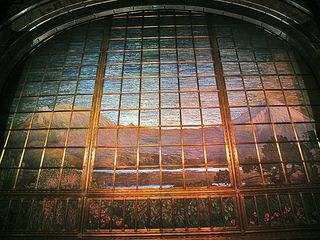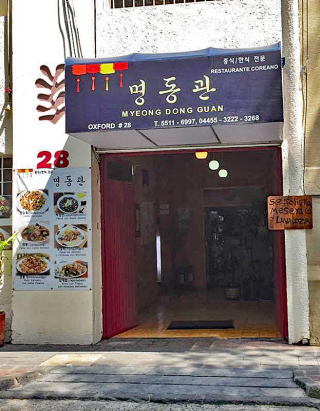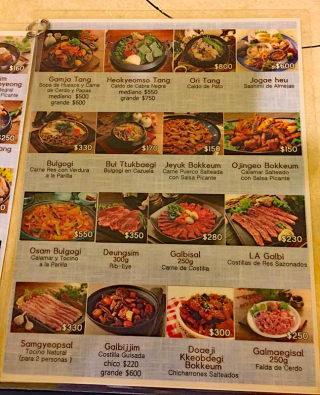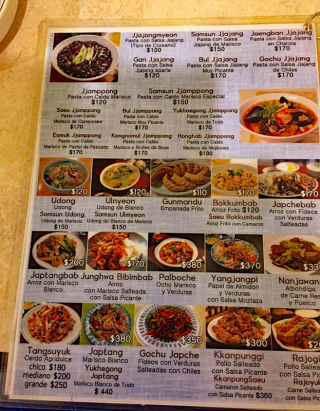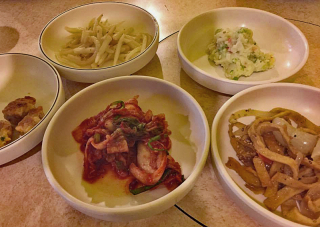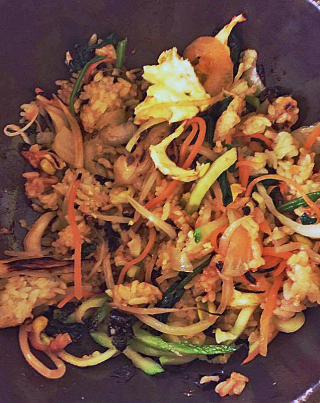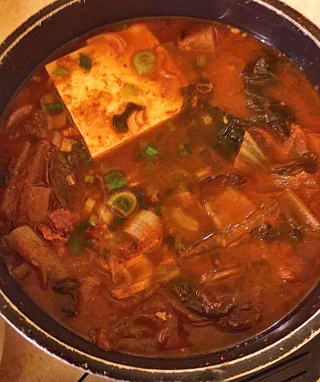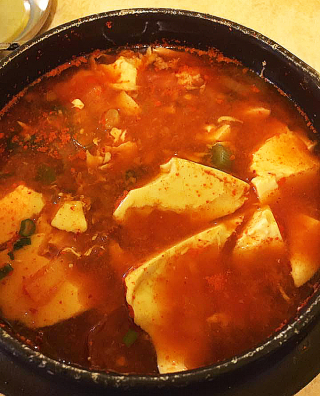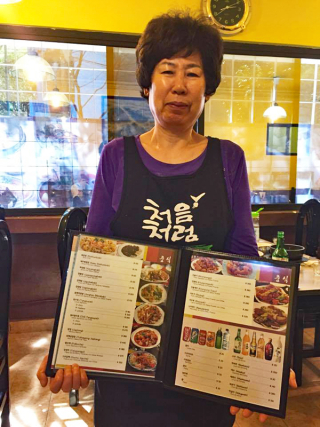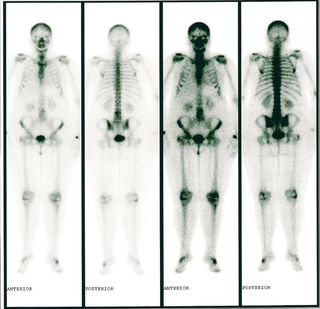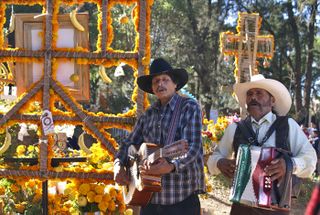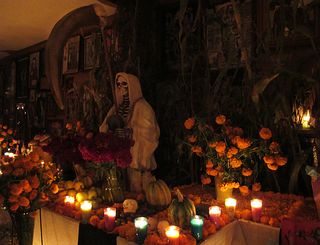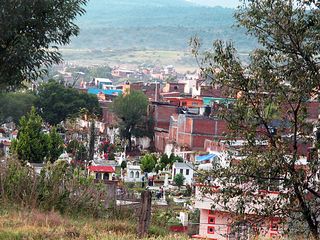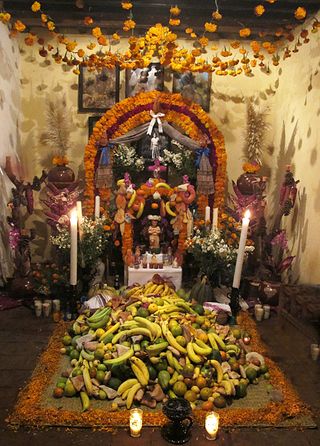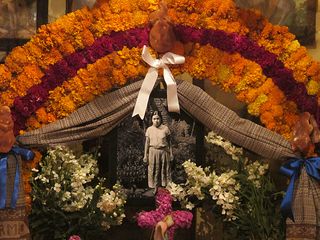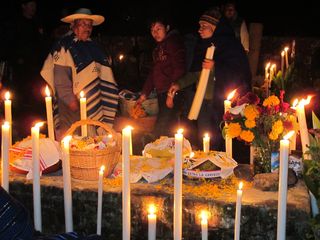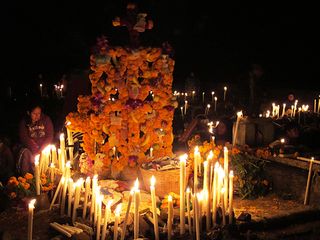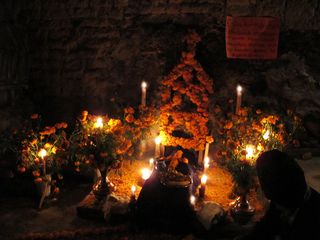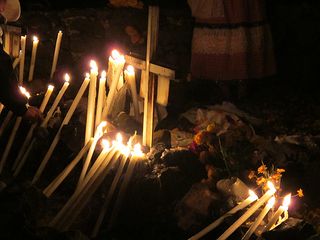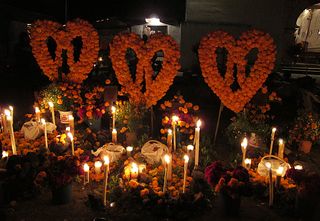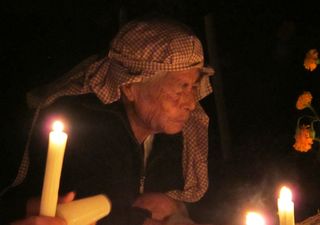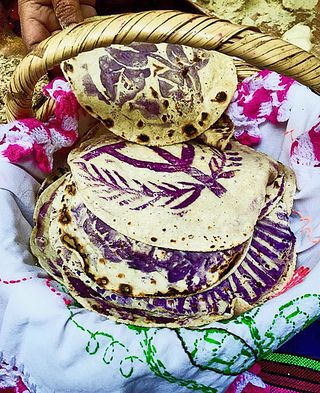
Ceremonial tortillas from the state of Guanajuato, made only in the Otomí communities of that state as food for certain ritual occasions. These were served at Restaurante Azul Condesa during July 2016, when Guanajuato's cuisine was featured for the month at the restaurant. They became so deservedly popular that the restaurant has continued to offer them. The tortillas, made of nixtamalized corn masa (dough), are shaped, pressed, and cooked on one side on a comal (griddle). They are then flipped and stamped with a hand-carved wooden stamp that has been dipped in muicle, a liquid vegetable dye made from a wild plant.
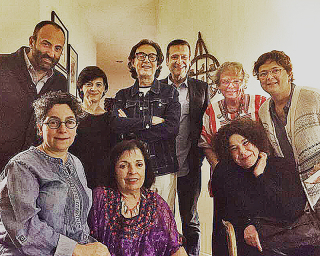
In mid-July, it was my tremendous honor to host an evening in honor of Zarela Martínez (seated, center), who in 1987 opened Zarela, a Mexican restaurant that is credited as being a pioneer of regional Mexican cuisine in New York City. She is the author of several wonderful cookbooks, including Food from My Heart: Cuisines of Mexico Remembered and Reimagined (1995) (nominated for Best International Cookbook of the Year, James Beard Foundation); The Food and Life of Oaxaca: Traditional Recipes from Mexico's Heart (1997); and Zarela's Veracruz (2001). Some of the guests surrounding Zarela are: (seated) Celia Marín Chiunti and Rosa María Villareal; (standing from left) Rafael Mier, Marisa Zannie, Pedro Luis de Aguinaga, Mexico Cooks!, and Sonia Ortiz.
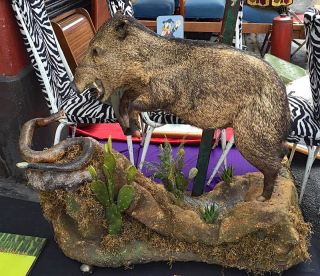
As a frequent visitor to a local tiradero (slang for flea market–literally, garbage dump), Mexico Cooks! has bought many wonderful old things for decorating the home place. This is not one of them. In August, a friend asked me to photograph this tableau of a javalí (wild boar) and rattlesnake for her nephew, a fan of taxidermy. One can buy anything from a silver ring to–well, a stuffed javalí–at this flea market.
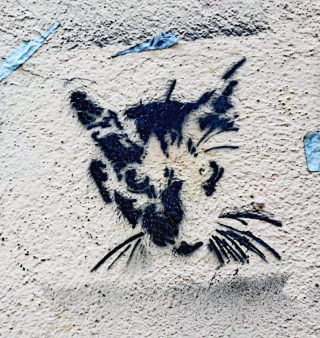
I often go out looking for interesting graffiti, and almost always find something fun. This cat face, stenciled onto a wall close to my home, looks very much like Risa, my tortoiseshell kitten.
[youtube=https://www.youtube.com/watch?v=vtqVC3NaCLM&w=560&h=315]
An event in Mexico City at the end of August brought several cocineras tradicionales (traditional cooks) to visit from Michoacán. This woman spent most of the day pat-pat-patting truly hand-made tortillas to serve to the public along with home-style food. The gentle rhythm of her hands against the masa (corn dough) coupled with the laughter of other cooks made me feel like I was home again in Michoacán. Listen as she pats out the tortilla; imagine the smell of woodsmoke. Both are still iconic to rural Mexico.
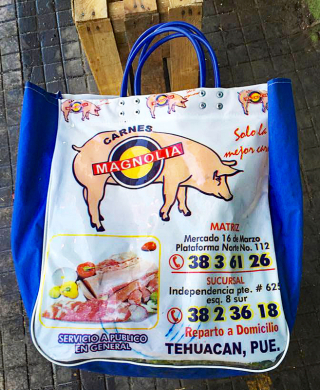
This hard-working market bag advertises a butcher shop in Tehuacán, Puebla. No recap of the year 2016 could be complete without at least one mention of the life-changing weekend I spent in this south-central part of Mexico. Remember the Mexico Cooks! article about the cave where…well, re-read it here: Corn, An Ancient Gift from Mexico to Feed the World. Chills still run up the back of my neck when I think about gazing into this small hollow space, a shelter in the mountain.
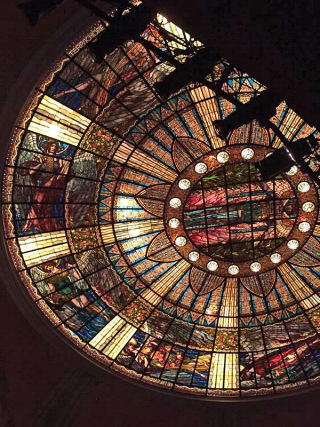
Early September took us to the Palacio de Bellas Artes (Fine Arts Palace) in downtown Mexico City. The traditional music group Los Folkloristas celebrated its 50th anniversary here. A good friend is a member of the group and made certain that another friend and I had great seats, a couple of levels below the glorious stained-glass dome.

Sometimes a person can't help being ecstatic. Meeting Laura Esquivel (author of the extraordinary and ground-breaking Like Water for Chocolate, among other wonderful books) near the end of September was a real highlight of my year. She was part of the press conference for the MODO exhibition Del Plato a la Boca–the beautifully curated, kitchen-oriented show will be at the museum through February 2017. Don't miss it.
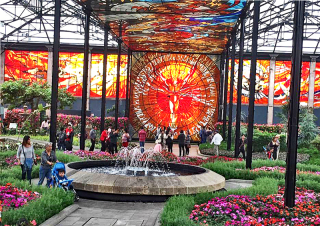
Mid-October took me to Toluca, in the State of Mexico, to see the Cosmovitral. The Cosmovitral is a beautiful stained glass-enclosed botanical garden. The group Aztec Explorers, which organizes mostly day tours for people new to Mexico City or the surrounding area, invited me to come along to see the kind of work they do. The tour company advertises primarily to people who live in or near Mexico City and want to make friends with others while enjoying an overview of sites they've heard about and want to see. If this sounds like a day that suits your style, you'll enjoy the inexpensive tours that Lilia and Peter give. By all means tell them Mexico Cooks! sent you.
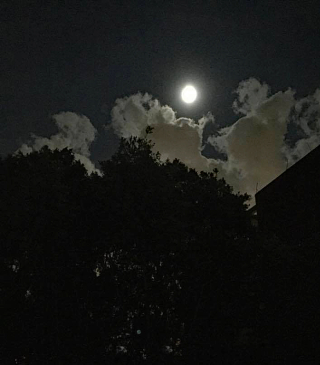
Remember the gorgeous October 15, 2016 super moon? I took this shot with my cellular phone, from my bathroom window! Moon over Mexico City, a lucky shot indeed.

For November 2, Día de Los Muertos, Mexico Cooks! took a small group of tourists to that flea market I mentioned above–no taxidermy this time, though. Alfredo Vilchis Roque, who is proclaimed as "the Da Vinci of the market", built an altar for Day of the Dead 2016. Click on any of the photographs for a larger view. Sr. Vilchis, whose work has been exhibited at the Louvre and is sold at a Paris gallery (among others), was generous enough to point out several fascinating aspects to the altar. Look, for example, just at knee level and in front of him: there's a tribute to Juan Gabriel, Mexico's world-famous singer and idol, who died on August 28, 2016.
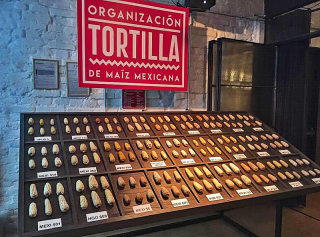
November 17, 2016, marked the launch of a program called Salvemos el Maíz Palomero de México (Let's Save Mexican Popcorn). Part of the project for the preservation of Mexico's native corns in general as well as for the preservation of the tortilla made of nixtamalized corn, the popcorn event was particularly designed to bring the near-extinction of Mexico's original corn to the attention of the press. It was a tremendous success; even Aristegui Noticias, the foremost news in Mexico shown on CÑÑ (CNN in Spanish), picked up the story and broadcast it to the Spanish-speaking world. You'll be reading a lot more about this multi-faceted project in the weeks and months to come, right here at Mexico Cooks!.
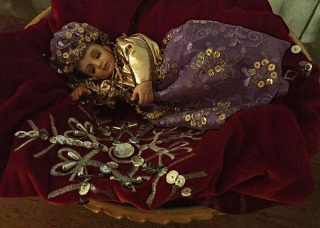
Whatever your faith, may the New Year bless you with abundance in all things, especially joy and peace. From our house to yours, we wish you a blessed 2017.
Looking for a tailored-to-your-interests specialized tour in Mexico? Click here to see new information: Tours

